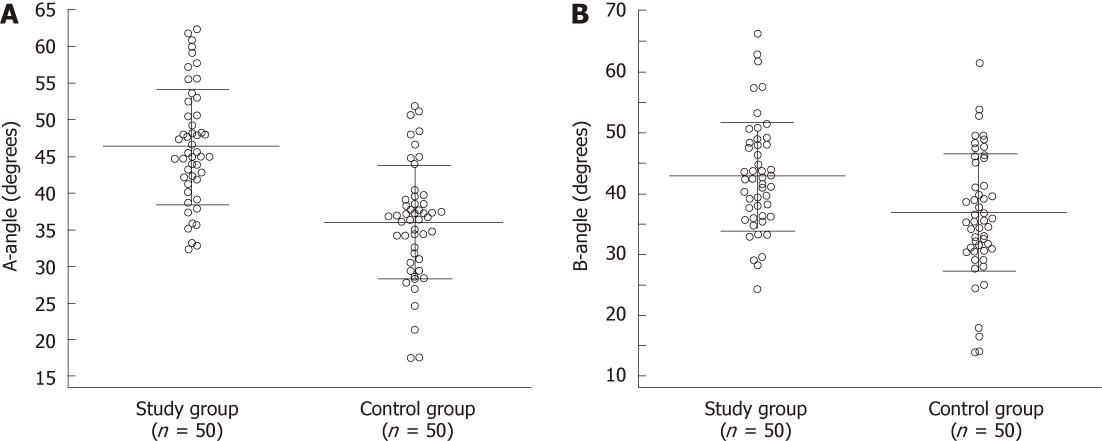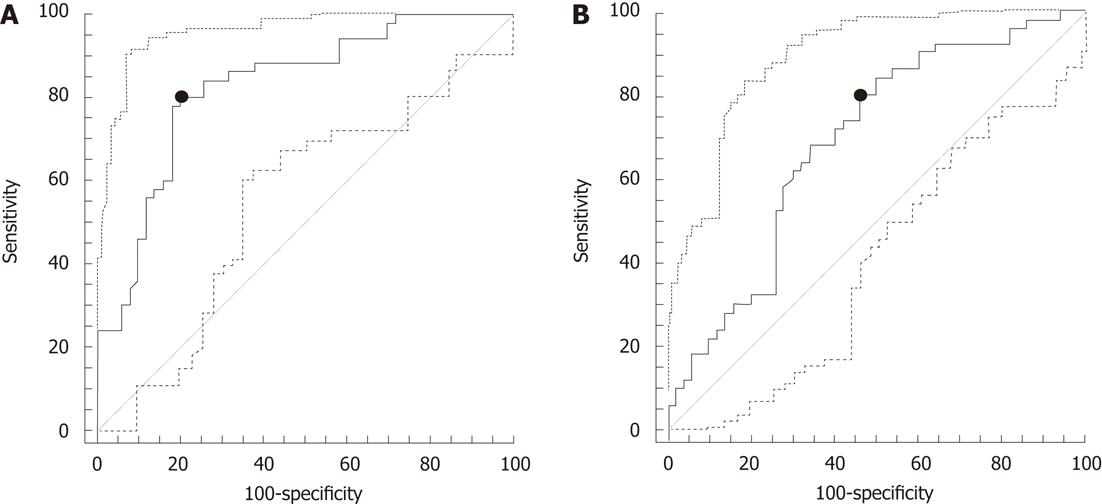Copyright
©2012 Baishideng Publishing Group Co.
Figure 1 Mid-sagittal T2-weighted fast spin-echo image of the lumbar spine illustrates the angle measurements which were performed in the study.
A-angle was defined by a line parallel to the superior surface of the sacrum and a line perpendicular to the axis of the scan table. B-angle was defined by a line parallel to the superior endplate of L3 vertebra and a line parallel to the superior surface of the sacrum.
Figure 2 Graphic demonstration of the results obtained during measurements of the A-angle (A) and B-angle (B) in the two groups of the study.
On each column, a set of horizontal lines represents the average value (long line) ± SD (short lines).
Figure 3 T2-weighted images of the lumbar spine.
A: The mid-sagittal T2-weighted image of the lumbar spine exhibits increased A-angle (49.38°) and B-angle (53.04°); B: Correspinding axial fast spin-echo image in this 42-year-old female subject with transitional lumbosacral anatomy demonstrates bilateral pseudoarthrosis of the transitional vertebra with the sacral ala (arrowheads).
Figure 4 Receiver operating characteristic curves showing the predictive value of A-angle (A) and B-angle (B) for the presence of transitional lumbosacral vertebra.
- Citation: Chalian M, Soldatos T, Carrino JA, Belzberg AJ, Khanna J, Chhabra A. Prediction of transitional lumbosacral anatomy on magnetic resonance imaging of the lumbar spine. World J Radiol 2012; 4(3): 97-101
- URL: https://www.wjgnet.com/1949-8470/full/v4/i3/97.htm
- DOI: https://dx.doi.org/10.4329/wjr.v4.i3.97












